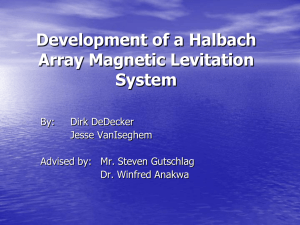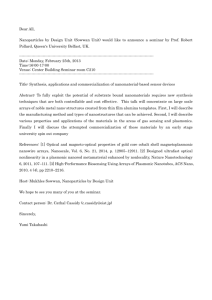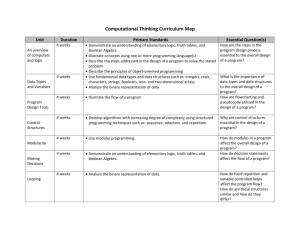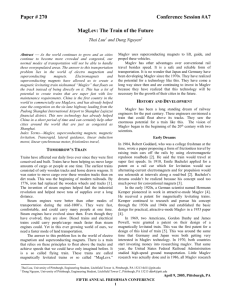Vivek Kumar
advertisement
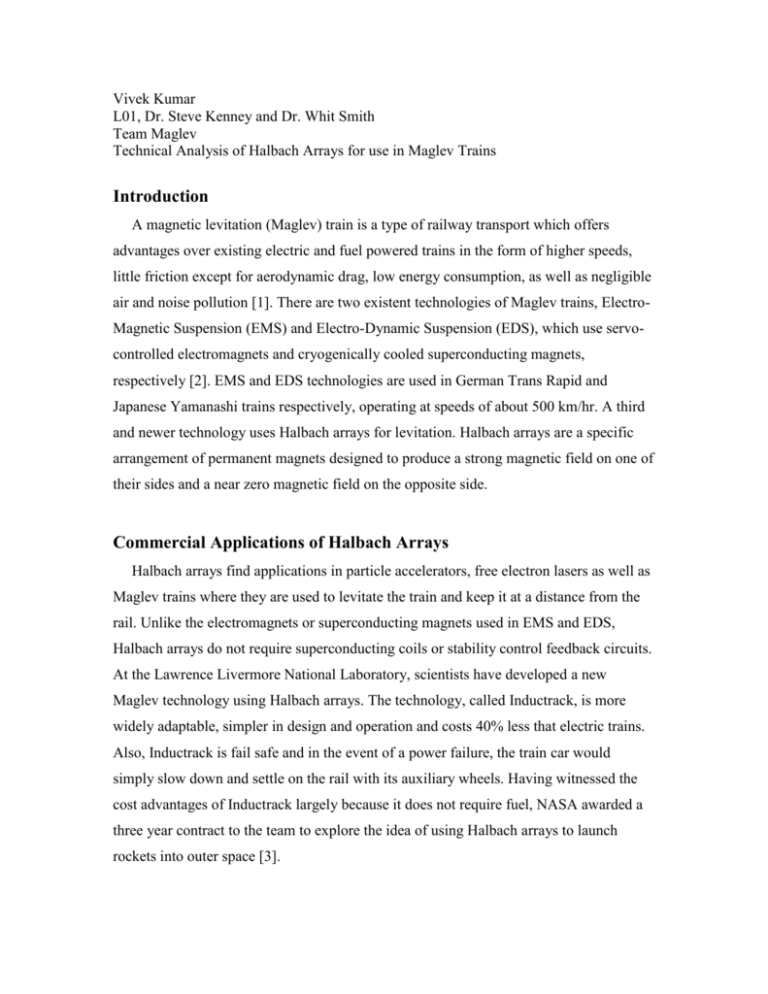
Vivek Kumar L01, Dr. Steve Kenney and Dr. Whit Smith Team Maglev Technical Analysis of Halbach Arrays for use in Maglev Trains Introduction A magnetic levitation (Maglev) train is a type of railway transport which offers advantages over existing electric and fuel powered trains in the form of higher speeds, little friction except for aerodynamic drag, low energy consumption, as well as negligible air and noise pollution [1]. There are two existent technologies of Maglev trains, ElectroMagnetic Suspension (EMS) and Electro-Dynamic Suspension (EDS), which use servocontrolled electromagnets and cryogenically cooled superconducting magnets, respectively [2]. EMS and EDS technologies are used in German Trans Rapid and Japanese Yamanashi trains respectively, operating at speeds of about 500 km/hr. A third and newer technology uses Halbach arrays for levitation. Halbach arrays are a specific arrangement of permanent magnets designed to produce a strong magnetic field on one of their sides and a near zero magnetic field on the opposite side. Commercial Applications of Halbach Arrays Halbach arrays find applications in particle accelerators, free electron lasers as well as Maglev trains where they are used to levitate the train and keep it at a distance from the rail. Unlike the electromagnets or superconducting magnets used in EMS and EDS, Halbach arrays do not require superconducting coils or stability control feedback circuits. At the Lawrence Livermore National Laboratory, scientists have developed a new Maglev technology using Halbach arrays. The technology, called Inductrack, is more widely adaptable, simpler in design and operation and costs 40% less that electric trains. Also, Inductrack is fail safe and in the event of a power failure, the train car would simply slow down and settle on the rail with its auxiliary wheels. Having witnessed the cost advantages of Inductrack largely because it does not require fuel, NASA awarded a three year contract to the team to explore the idea of using Halbach arrays to launch rockets into outer space [3]. Underlying Technology Halbach arrays are designed to produce a strong magnetic field on only one of their sides, thereby closely representing a monopole. The magnetic field near the front face of the array varies sinusoidally with position parallel to the face of the array, and falls off exponentially with distance away from the front face [4]. Halbach arrays are mounted on the underside of a train and run through its entire length. Magnetic fields are produced from the moving Halbach arrays on the underneath of the train inducing a current in close-packed shorted electrical coils mounted within the rail or track, levitating the train and stably centering it between the two rails. Building Blocks for Implementation The arrays comprise smaller magnetic portions that are each magnetized differently to produce magnetic fields in different directions [5]. Small portions are attached together to form arrays in the shapes of cylinders, rings or cuboids for varying applications. Numerous Halbach arrays can be attached together in series and this property is useful in Maglev trains, often stretching up to a kilometer in length. Even though the electromagnetic drag associated with Inductrack becomes small at high speeds, an auxiliary power source would also be needed to maintain the train's high speed against aerodynamic drag [6]. The amount of power needed depends on the weight of the vehicle and its maximum speed. There are no software requirements for Maglev trains with Halbach arrays because the use of electromagnetic forces allows the trains to levitate and propel themselves. References [1] A. Heller, “A New Approach for Magnetically Levitation Trains – and Rockets,” [Online Website], [cited 2009 Jan 20], Available HTTP: https://www.llnl.gov/str/Post .html [2] R. F. Post, Toward More Efficient Transport: The Inductrack Maglev System, Lawrence Livermore National Laboratory, 2005. [3] L. Tung, R. Post, and J. Martinez-Frias, Final Progress Report for the NASA Inductrack Model Rocket Launcher at the Lawrence Livermore National Laboratory, UCRL-ID-144455 (2001). [4] C. Ham, W. Ko and Q. Han, “Analysis and optimization of a Maglev system based on the Halbach magnet arrays,” Journal of Applied Physics, vol. 99, issue 8, 2006 [5] Adept, “Build a Halbach Array”, [Online Website], [cited 2009 Jan 21], Available HTTP: http://www.matchrockets.com/ether/halbach.html [6] Adept, “Halbach Arrays”, [Online Website], [cited 2009 Jan 21], Available HTTP: http://www.gaussboys.com/pages.php?pageid=6




